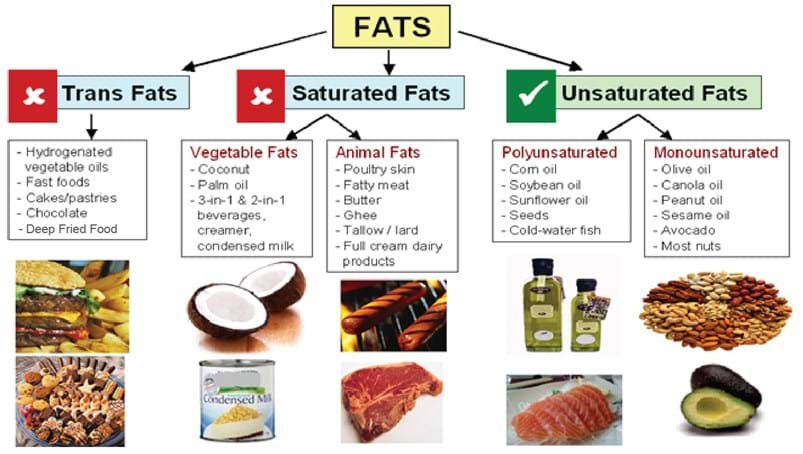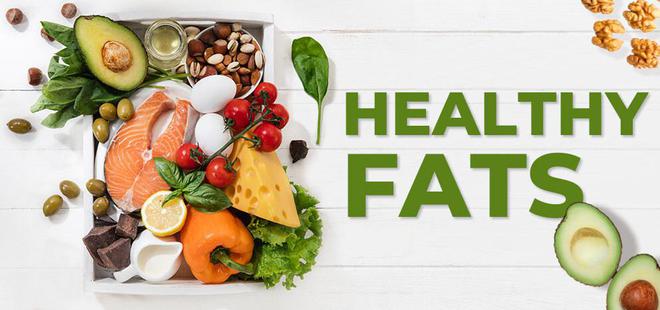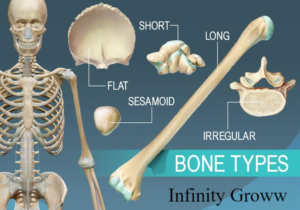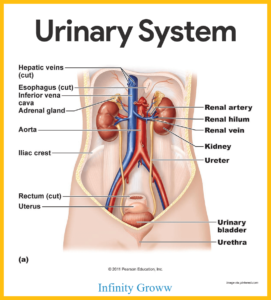Table of Content :
- Introduction: The Significance of Human Body Fat
- Importance of Human Body Fat Beyond Appearance
- Functions and Roles of Body Fat
- Body Fat: Types and Distribution
- White Adipose Tissue (WAT)
- Energy Storage and Balance
- Subcutaneous Areas and Organ Accumulation
- Brown Adipose Tissue (BAT)
- Heat Generation and Thermogenesis
- Presence in Newborns and Adults
- Visceral Fat
- Abdominal Cavity Surrounding Organs
- Metabolic Risks and Inflammation
- White Adipose Tissue (WAT)
- The Importance of Body Fat
- Energy Reserve and Utilization
- Insulation, Temperature Regulation, and Protection
- Hormone Regulation and Appetite Control
- Factors Influencing Body Fat
- Genetics and Body Composition
- Diet and Nutrition
- Caloric Intake, Fat Types, and Impact
- Physical Activity and Metabolism
- Hormones and Fat Storage
- Insulin, Cortisol, and Hormonal Balance
- Lifestyle Factors
- Stress, Sleep, and Medication Effects
- Health Implications of Body Fat
- Obesity and Related Health Conditions
- Metabolic Syndrome and Cardiovascular Risks
- Managing Body Fat for Better Health
- Balanced Diet and Nutrient-Dense Foods
- Regular Exercise and Muscle Gain
- Hydration, Sleep, and Metabolic Support
- Stress Management for Weight Control
- Professional Guidance and Strategies
- Sources of Healthy Fats
- Conclusion
Introduction: The Significance of Human Body Fat
Human body fat, also known as adipose tissue, is an essential component of the human body that plays a crucial role in maintaining health and function. It is a type of connective tissue made up of adipocytes, which are specialized cells designed for fat storage. While often stigmatized for its association with obesity, body fat serves several vital functions in the body. This article delves into the significance of body fat, its types, distribution, and the impact it has on our health.
Body Fat: Types and Distribution
- White Adipose Tissue (WAT):
- This is the most common type of body fat, responsible for storing excess energy in the form of triglycerides. WAT is found throughout the body and accumulates primarily in the subcutaneous areas (under the skin) and around organs. It acts as a repository of stored energy and is essential for maintaining energy balance. However, excessive accumulation of subcutaneous white fat can lead to obesity and related health issues. Subtopics to consider:
- Functions of subcutaneous white adipose tissue.
- Factors influencing its distribution in different body areas.
- How subcutaneous fat contributes to body shape and composition.
- This is the most common type of body fat, responsible for storing excess energy in the form of triglycerides. WAT is found throughout the body and accumulates primarily in the subcutaneous areas (under the skin) and around organs. It acts as a repository of stored energy and is essential for maintaining energy balance. However, excessive accumulation of subcutaneous white fat can lead to obesity and related health issues. Subtopics to consider:
- Brown Adipose Tissue (BAT):
- Unlike WAT, BAT generates heat and helps regulate body temperature. It contains a higher density of mitochondria and is mostly found in newborns, but adults can also have smaller amounts, typically around the neck and upper back. BAT plays a role in thermogenesis, which is the process of producing heat to maintain body temperature. It has garnered attention for its potential role in weight management and metabolic health.
- Subtopics to consider:
- Mechanisms of thermogenesis in brown adipose tissue.
- The link between brown fat and metabolism.
- Emerging research on activating brown fat for health benefits.
- Visceral Fat:
- This type of fat surrounds organs in the abdominal cavity and poses a higher health risk compared to subcutaneous fat. Excess visceral fat has been linked to various metabolic disorders, including diabetes and cardiovascular diseases. Visceral fat is metabolically active and releases inflammatory substances that contribute to insulin resistance and chronic inflammation.
- Subtopics to consider:
- Health implications of visceral fat accumulation.
- Relationship between visceral fat and metabolic syndrome.
- Strategies to measure and manage visceral fat.
The Importance of Body Fat

- Body fat is not just a passive storage site for excess calories; it’s an essential component of our body with numerous roles and functions.
- Energy Reserve: Body fat acts as a crucial energy reserve. When we consume more calories than we expend, the excess energy is stored in the form of triglycerides in fat cells. During periods of caloric deficit (e.g., between meals, during exercise), the body taps into these stored fat reserves to provide a steady supply of energy. This mechanism helps maintain energy balance and ensures our body has a consistent source of fuel even when food intake is limited.
- Insulation and Temperature Regulation: Subcutaneous fat acts as an insulating layer, helping to regulate body temperature. It serves as a thermal barrier, preventing heat loss and providing protection against cold environments. This insulation is especially important for maintaining a stable internal temperature, particularly in cold conditions.
- Protection and Cushioning: Body fat serves as a protective cushion around vital organs such as the kidneys, liver, and heart. This protective function helps absorb shocks and impacts, reducing the risk of physical injury. In addition, fat pads protect the soles of the feet and palms of the hands, providing cushioning during weight-bearing activities.
- Hormone Regulation: Adipose tissue is an endocrine organ that releases hormones into the bloodstream. Leptin, for instance, is a hormone secreted by fat cells that plays a crucial role in appetite regulation and energy balance. Leptin signals to the brain when energy stores are sufficient, thus influencing feelings of hunger and satiety. Adiponectin is another hormone produced by fat cells that helps regulate insulin sensitivity and metabolic function.
Factors Influencing Body Fat :

- Body fat accumulation is influenced by a combination of genetic, environmental, and lifestyle factors.
- Genetics: Genetics play a significant role in determining an individual’s susceptibility to gaining weight and their overall body composition. Some people may have a genetic predisposition to store excess fat more readily than others.
- Diet and Nutrition: The type and amount of food consumed impact body fat levels. A diet high in calories, unhealthy fats, and sugars can lead to fat accumulation. Conversely, a balanced diet rich in whole foods, lean proteins, healthy fats, and fiber supports a healthier body composition.
- Physical Activity: Regular physical activity helps burn calories, increase metabolism, and promote muscle mass. Engaging in both aerobic exercises and strength training contributes to fat loss and overall weight management.
- Hormones: Hormones such as insulin, cortisol, and sex hormones influence fat storage and distribution. Hormonal imbalances, often associated with conditions like polycystic ovary syndrome (PCOS) or thyroid disorders, can affect body fat regulation.
- Lifestyle Factors: Factors such as stress, inadequate sleep, and certain medications can impact body fat levels. Chronic stress can lead to the release of cortisol, which is associated with fat storage, particularly in the abdominal area.
Health Implications of Body Fat :
- Heart Disease. Diabetes. Stroke. Hypertension (high BP) Some Cancers. Sleep Apnea (pauses in breathing) Social discrimination. Kidney disorders. Surgical risk. Less resistant to infections. Problem during pregnancy. Shortened life expectancy.

Excess body fat, especially visceral fat, is linked to various health issues and chronic diseases.
- Obesity: Obesity, characterized by excessive body fat, increases the risk of numerous health problems, including cardiovascular diseases, type 2 diabetes, certain cancers, and joint issues.
- Metabolic Syndrome: Metabolic syndrome is a cluster of conditions including high blood pressure, elevated blood sugar, excess abdominal fat, and abnormal cholesterol levels. It significantly raises the risk of heart disease, stroke, and diabetes.
- Cardiovascular Health: Accumulation of body fat, especially around the abdomen, is associated with higher levels of inflammation, cholesterol, and triglycerides. These factors contribute to the development of atherosclerosis and increase the risk of heart disease.
Managing Body Fat for Better Health :
Adopting a balanced lifestyle is crucial for managing body fat and promoting overall health.
- Balanced Diet: Prioritize nutrient-dense foods, including fruits, vegetables, lean proteins, whole grains, and healthy fats. Limit consumption of sugary and processed foods.
- Regular Exercise: Engage in a mix of cardiovascular exercises (like walking, jogging, cycling) and strength training to burn calories, build muscle, and improve metabolism.
- Hydration and Sleep: Staying hydrated supports metabolic processes, and quality sleep helps regulate hunger hormones and metabolism.
- Stress Management: Chronic stress can contribute to weight gain. Practice stress-reduction techniques such as meditation, yoga, and mindfulness.
- Medical Guidance: If struggling with weight management, seek professional guidance from healthcare providers or registered dietitians for personalized recommendations.
FAT Rich Source :

Certainly! When it comes to sources of dietary fats, it’s important to focus on incorporating healthy fats into your diet while minimizing unhealthy or saturated fats. Here are some common sources of healthy fats:
1. Avocado: Avocados are rich in monounsaturated fats, which are heart-healthy fats that can help lower bad cholesterol levels. They also provide vitamins, minerals, and fiber.
2. Olive Oil: Extra virgin olive oil is a staple in Mediterranean diets and contains monounsaturated fats. It’s commonly used for cooking and as a salad dressing.
3. Nuts and Seeds: Almonds, walnuts, chia seeds, flaxseeds, and sunflower seeds are excellent sources of healthy fats, including both monounsaturated and polyunsaturated fats. They also provide protein and fiber.
4. Fatty Fish: Salmon, mackerel, sardines, and trout are rich in omega-3 fatty acids, which have numerous health benefits, including reducing inflammation and supporting heart health.
5. Nut Butters: Natural peanut butter, almond butter, and other nut butters contain healthy fats and protein. Choose options without added sugars or hydrogenated oils.
6. Flaxseed: Flaxseeds are a good source of alpha-linolenic acid (ALA), an omega-3 fatty acid. Ground flaxseeds can be added to smoothies, yogurt, or oatmeal.
7. Chia Seeds: Chia seeds are high in ALA omega-3 fatty acids, fiber, and protein. They can be added to yogurt, smoothies, or used to make chia pudding.
8. Coconut: Coconut products, such as coconut oil, coconut milk, and shredded coconut, provide saturated fats, but they also contain medium-chain triglycerides (MCTs), which are considered healthy fats.
9. Dark Chocolate: Dark chocolate with a high cocoa content (70% or more) contains healthy fats and antioxidants. Enjoy in moderation.
10. Plant-Based Oils: Besides olive oil, other plant-based oils like canola oil and avocado oil are good sources of healthy fats.
It’s important to strike a balance and consume these healthy fats in moderation as part of a well-rounded diet. While healthy fats are beneficial, it’s also important to limit the intake of saturated and trans fats, often found in processed foods, fried foods, and some baked goods. Reading food labels can help you identify sources of unhealthy fats and make informed choices.
Conclusion :
role of body fat is essential for maintaining good health. Rather than focusing solely on appearance, a holistic approach that considers the types of fat, their distribution, and the impact on overall well-being is crucial. By adopting a balanced lifestyle, including a nutrient-rich diet, regular exercise, and stress management, individuals can take proactive steps toward achieving and maintaining a healthy body fat level, ultimately enhancing their quality of life.







